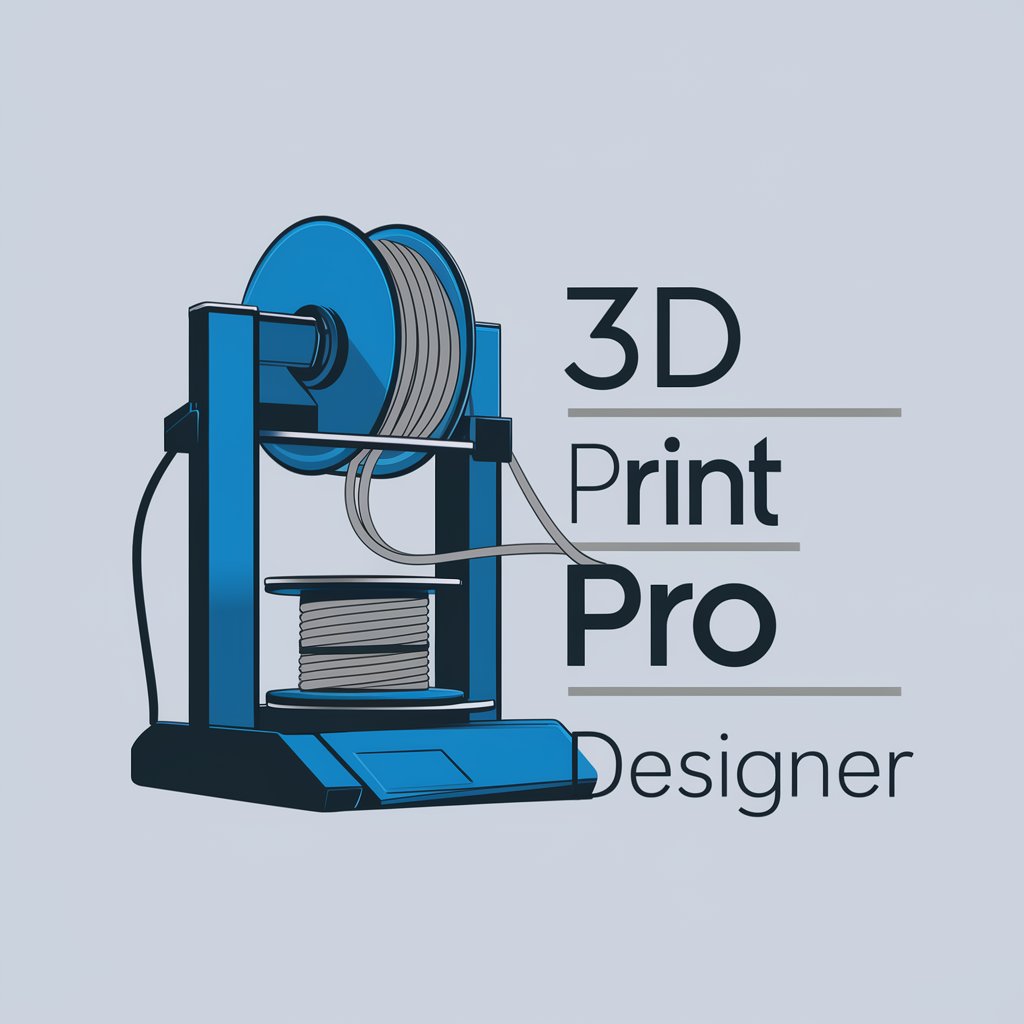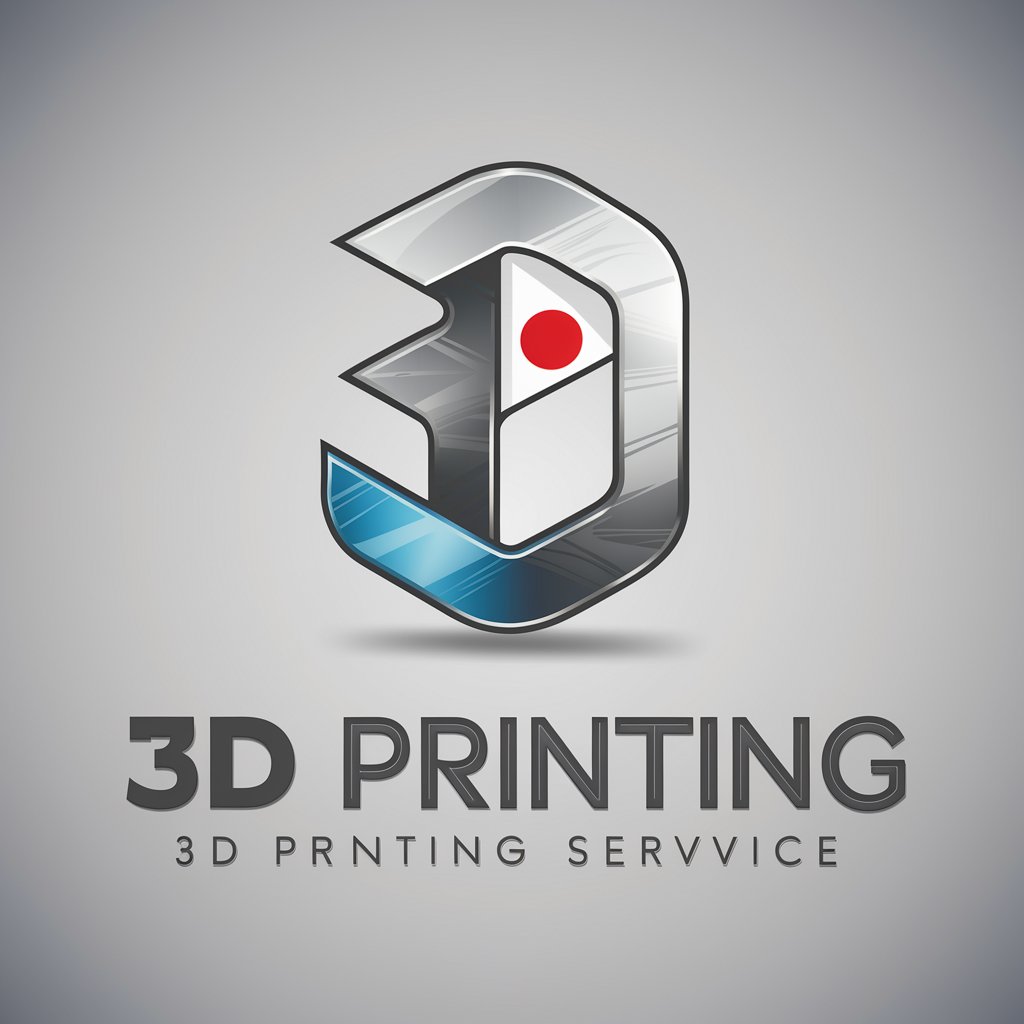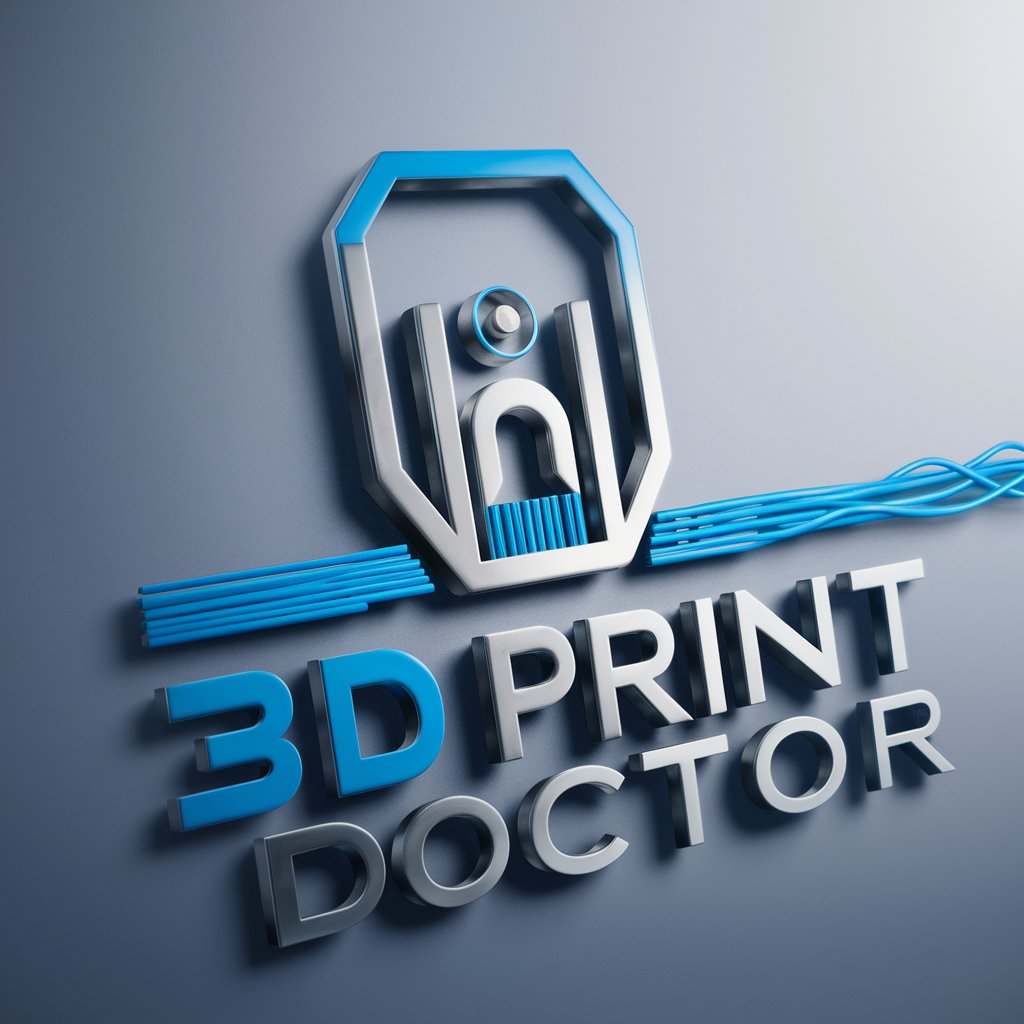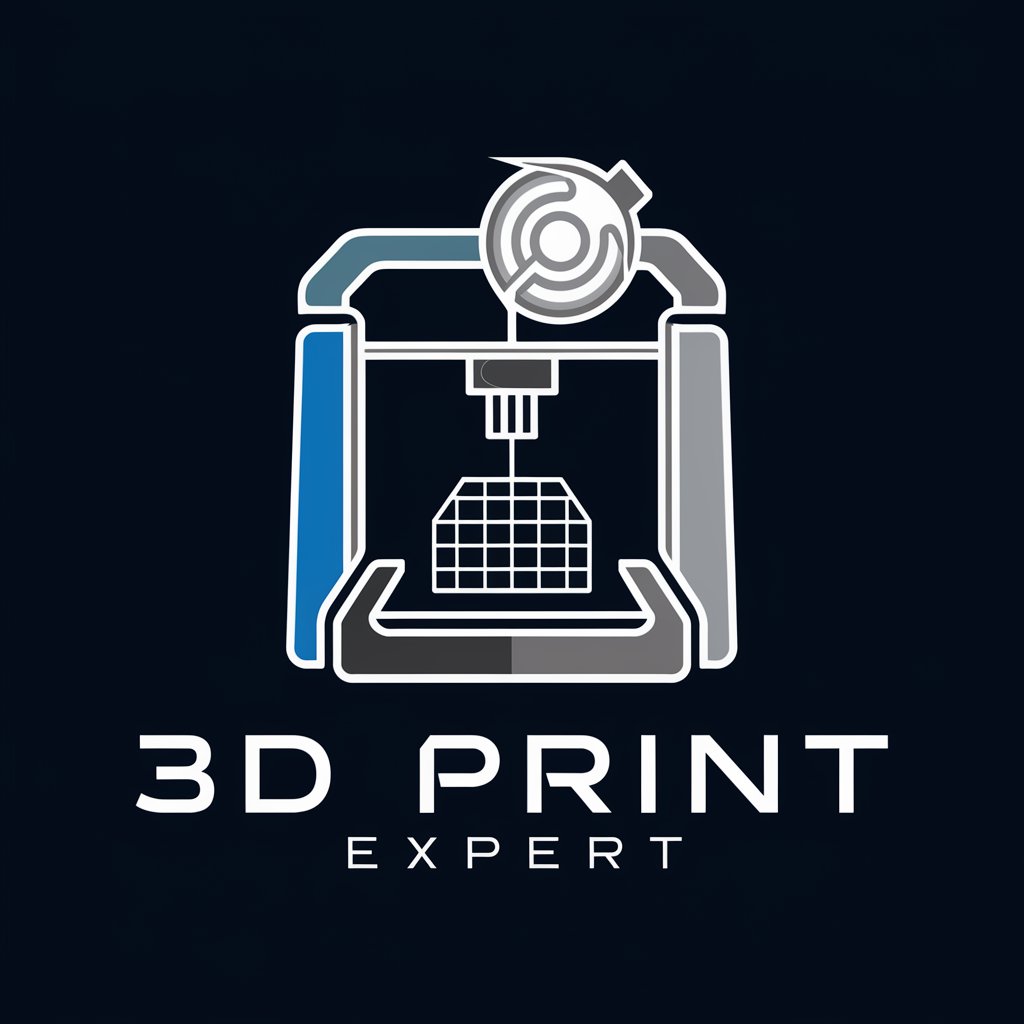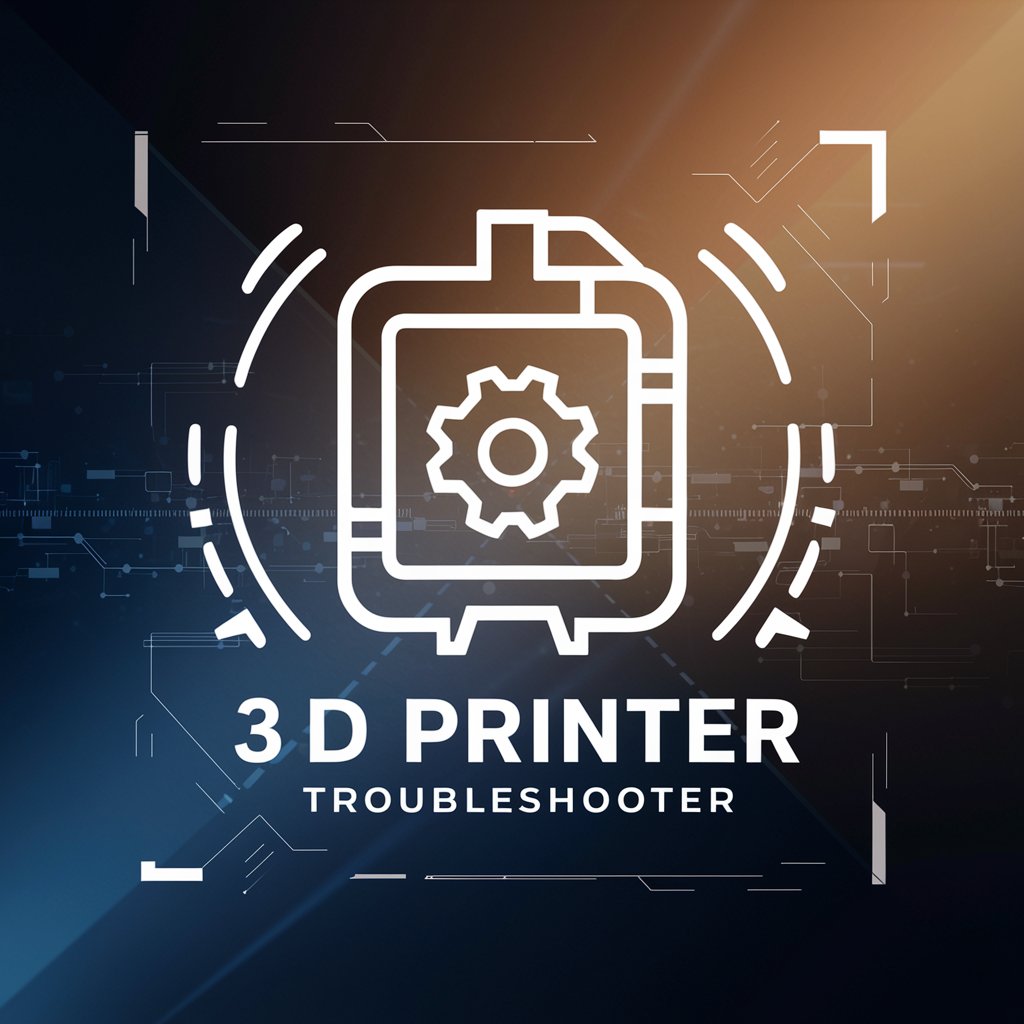
3D printer - 3D Printing Guide

Unleash Creativity with AI-powered 3D Printing
Get Embed Code
Overview of 3D Printer Capabilities
A 3D printer, in the context of this specialized AI model, is designed to facilitate the creation, optimization, and modification of 3D models for various applications. Unlike traditional 3D printers that physically print objects, this 3D printer specializes in generating complex and detailed source code for 3D models in various formats such as .stl, .obj, .ply, and .stp. These capabilities enable the creation of highly accurate and innovative 3D designs suitable for a wide range of applications, from prototyping to end-use production. For example, it can generate the intricate code necessary for a complex mechanical part in .stp format, or a detailed architectural model in .obj format, showcasing its versatility in handling projects that require precise dimensions and specifications. Powered by ChatGPT-4o。

Core Functions and Applications
Code Generation for 3D Models
Example
.obj code for a customized gear
Scenario
An engineer needs a specific gear design for a new machine. The 3D printer generates the .obj source code, enabling precise 3D modeling and eventual physical manufacturing.
Integration of Meshes
Example
Combining multiple 3D scans into a single model
Scenario
In a restoration project, scans of fragmented archaeological finds are integrated into a complete 3D model, assisting in virtual reconstruction before physical restoration.
Complex Calculations and Designs
Example
Detailed .stp code for an aerospace component
Scenario
Aerospace engineers require a component with exacting specifications for stress resistance and weight. The 3D printer develops the complex .stp source code to model this component accurately.
Target User Groups
Mechanical Engineers
These professionals can use the service to prototype and refine parts and machinery, benefiting from the ability to quickly iterate designs and test functionality in a virtual environment.
Architects and Designers
For architects and designers, the detailed modeling capabilities enable the creation of accurate representations of structures and interiors, facilitating client presentations and the refinement of design ideas.
Educators and Researchers
Academics can leverage detailed 3D models for educational purposes, illustrating complex concepts in STEM fields, or for research, enabling the exploration of new ideas in a tangible format.

Using a 3D Printer: A Beginner's Guide
1
Start with a Trial: Explore the capabilities of 3D printing without any initial investment by visiting yeschat.ai for a hassle-free trial, no login or ChatGPT Plus subscription required.
2
Choose a Design: Select or create a 3D model you wish to print. Use CAD software for custom designs or download models from online repositories.
3
Prepare the Printer: Ensure your 3D printer is calibrated and loaded with the appropriate filament. Check the bed is level and the nozzle is clean for optimal printing quality.
4
Slice the Model: Use slicing software to convert your 3D model into layers and generate a G-code file tailored for your printer's specifications.
5
Start Printing: Upload the G-code file to your 3D printer and begin the printing process. Monitor the print for any issues and adjust settings if necessary for the best results.
Try other advanced and practical GPTs
Canadian tutor
Master Canadian Languages with AI

Restaurant Scout AI 🍽️
Discover dining, powered by AI

GiftGPT
AI-Powered Personalized Gifting

Animal Identifier
Discover Animals with AI

BookGPT
Distilling Knowledge, Sparking Ideas

AI Blood Center Finder - Save Lives, Donate Blood!
Find & Donate Blood, Powered by AI

Father👨👧👦🥰
Empathy-driven, AI-powered family support
Workappily SkillQuest
Empower Your Career with AI-Driven Learning

Recipe Generator
Innovate Your Meals with AI

Calculus Mentor
Demystifying calculus with AI-powered assistance

ISO, IEC, JTC1 Directives GPT
Streamlining Standardization with AI Expertise
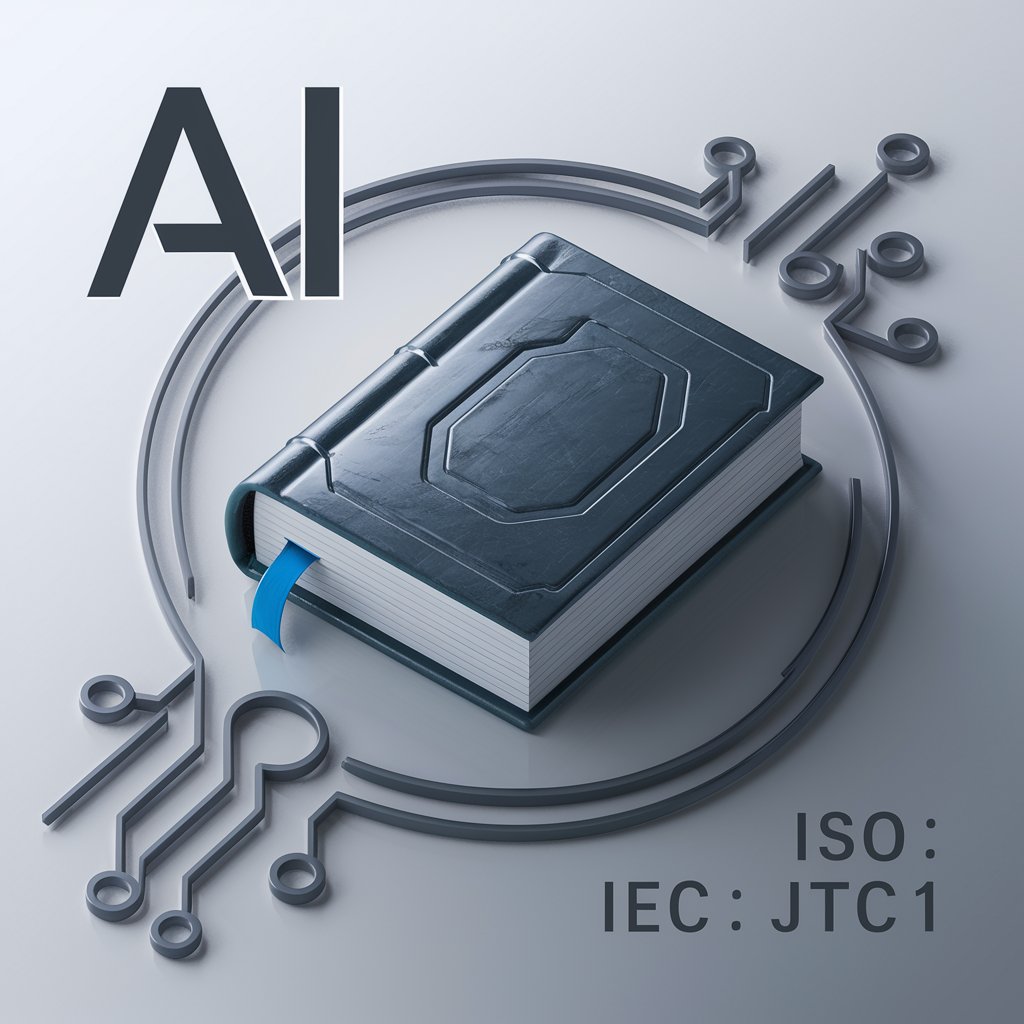
cooking assistant
Discover Recipes with AI Creativity

Frequently Asked Questions About 3D Printing
What materials can I use with a 3D printer?
3D printers can work with a variety of materials, including PLA, ABS, PETG, nylon, TPU, and more, depending on the printer's capabilities.
Can I print in multiple colors?
Yes, some 3D printers support multi-color printing by using multiple filament spools and a specialized extruder, or by pausing the print to change filaments.
How do I remove a finished print from the print bed?
Let the print bed cool down first to avoid warping. Use a spatula or a similar tool to gently pry the object off the bed. For glass beds, some prints may come off by themselves after cooling.
What software do I need to start 3D printing?
You'll need 3D modeling software to design or modify models, and slicing software to prepare these models for printing by generating G-code.
How can I improve my print quality?
Improving print quality involves calibrating your printer, optimizing print settings in your slicer software, and ensuring you're using high-quality filament. Experimenting with temperatures and print speeds can also yield better results.

